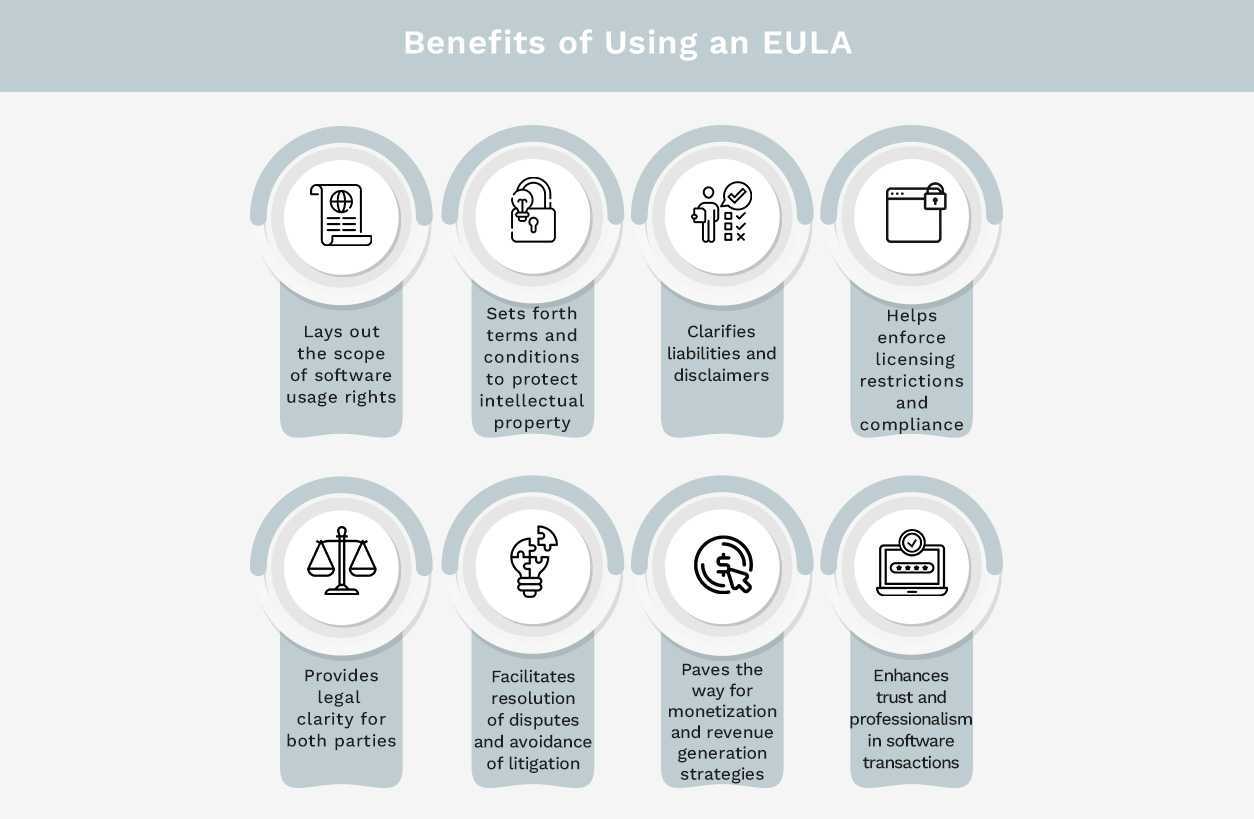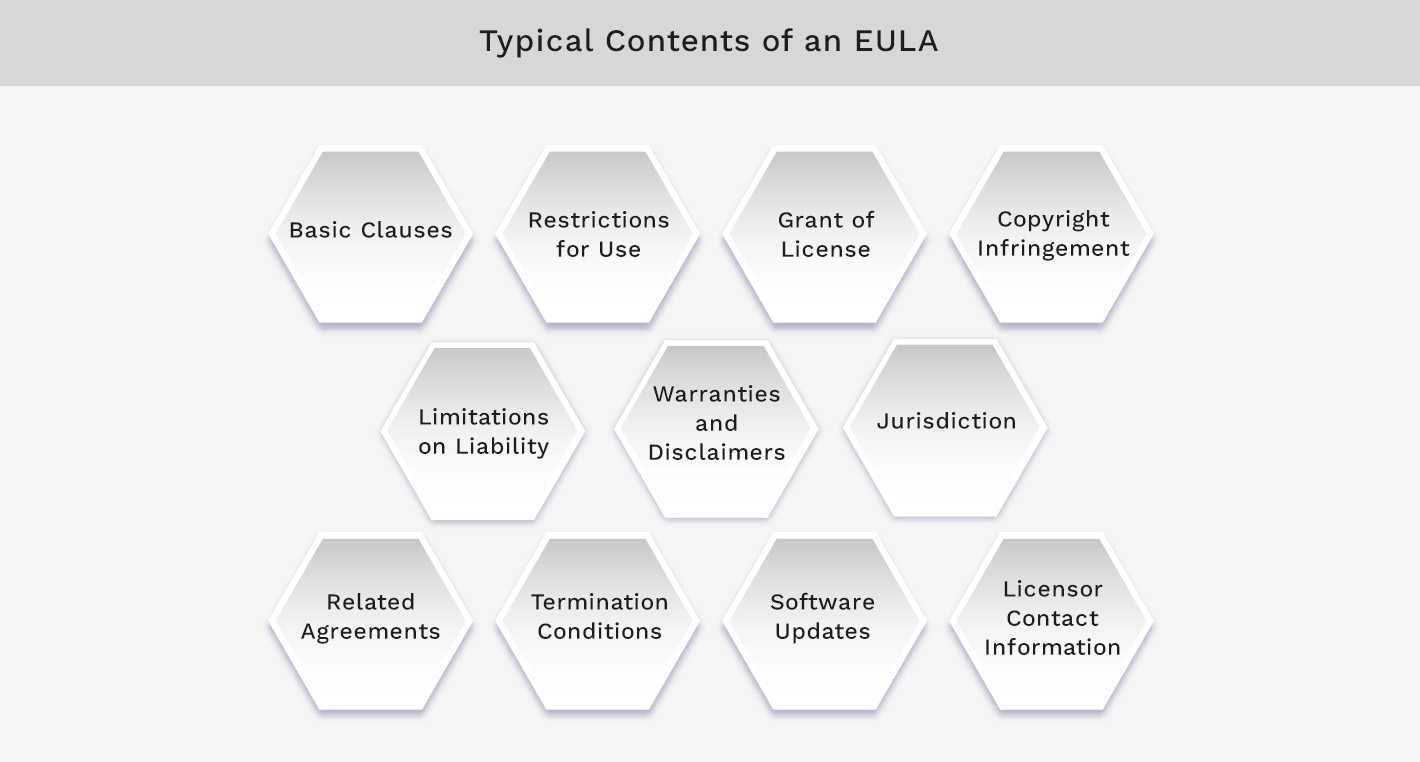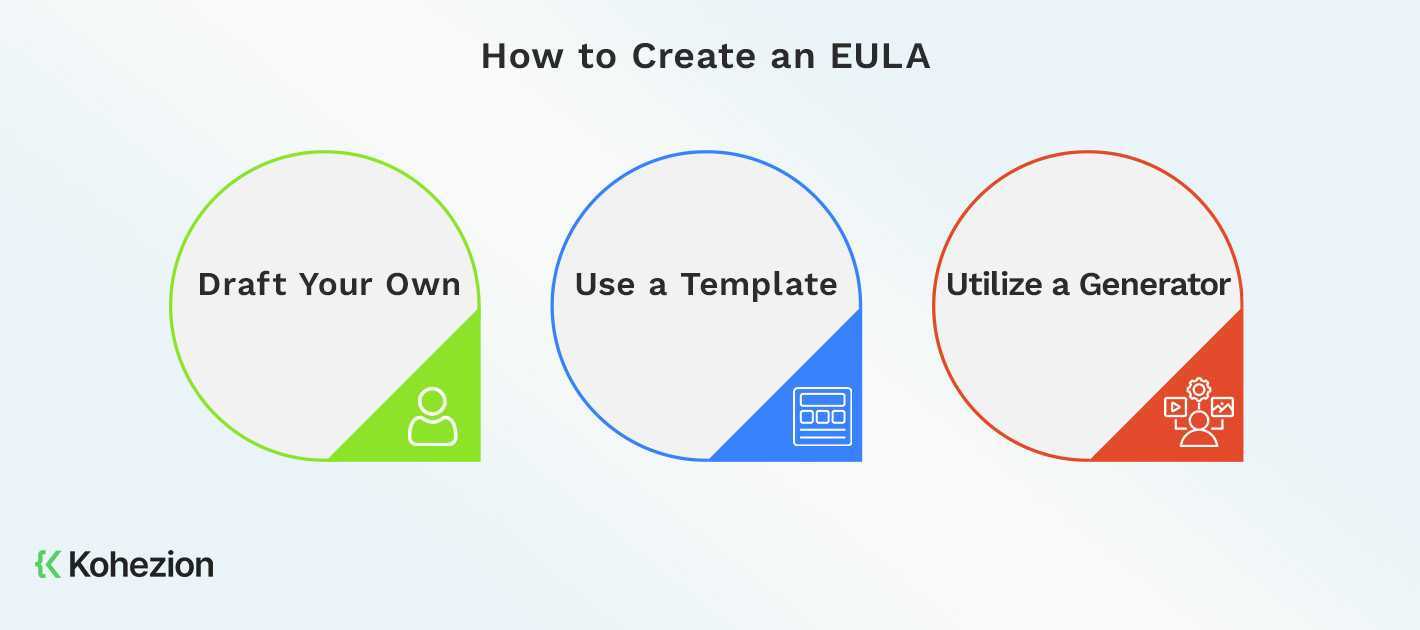An End-User License Agreement (EULA) is a legal contract between the software developer and the user outlining the terms and conditions for using the software. Understanding EULAs is crucial, as a survey by Deloitte found that 91% of users do not fully read these agreements. This lack of awareness can lead to unintended consequences, making it important to know what an EULA entails and how it impacts your use of software.
What is an End-User License Agreement (EULA)?
An End-User License Agreement is a legally binding contract that sets ground rules for how you can interact with the software. If you've ever clicked "I agree" during an installation, that's an EULA in action. It's your gateway to using the software, but only under the company's specified terms.
What is the Purpose of an EULA
The EULA serves as a critical tool for managing expectations and safeguarding rights. It delineates what you can and can't do with the software, sets boundaries, and informs users about the extent of their legal playground.
For the developer, it's a declaration of their rights over their digital creation, preventing unauthorized use or distribution. And for you as a user, it brings to light your privileges and limitations, preventing unwelcome surprises. The EULA ensures a fair and legally sound relationship between software producers and consumers.
Benefits of Using an EULA
Using an EULA offers several benefits for both software developers and users. Here are some key advantages of having a clear and well-defined EULA:
Lays out the scope of software usage rights
An EULA provides a map that defines the boundaries of software usage. This includes specifying whether the software is for personal, commercial, or educational use and often the number of devices on which you can install it.
Sets forth terms and conditions to protect intellectual property
An EULA proactively lays out terms that safeguard the creative and proprietary elements of the software. It allows developers to assert their ownership and prevent misuse of their craft. It's a declaration of the value and effort put into the software and a means to protect that investment from IP piracy and other unwarranted exploitation.
Clarifies liabilities and disclaimers
An EULA clarifies the liabilities and disclaimers. It sets expectations straight, stating that the software is provided "as is" and the extent to which the developers are accountable for any mishaps that might arise from its use. This section protects the creators from legal repercussions that could happen if the software doesn't perform as anticipated or interacts negatively with other applications.
Helps enforce licensing restrictions and compliance
An EULA clearly illustrates what is within the bounds of the licensing agreement, making it easier to track and manage software assets. This transparency helps maintain legal use and comply with industry standards and regulations.
Provides legal clarity for both parties
An EULA demystifies the responsibilities and rights of both the software company and the user. It establishes a clear, mutual understanding of each party's position, reducing the potential for misunderstandings and disagreement.
Facilitates resolution of disputes and avoidance of litigation
When disputes arise, the EULA acts as a pre-agreed path to amicable settlements. It contains binding terms, like mandatory arbitration or designated jurisdictions for legal. This preemptive planning often steers both parties away from the costly shores of litigation and toward dispute resolution.
Paves the way for monetization and revenue generation strategies
An EULA specifies the types of licenses available, be they one-time purchases, subscriptions, or freemium models. It can also include provisions for in-app purchases, upgrades, and cross-selling of related services. This way, the software can become a profitable venture.
Enhances trust and professionalism in software transactions
A finely tuned EULA signals to users that they're dealing with a serious player who respects their rights and the rights of their customers. Laying down transparent terms and sticking to them allows a company to increase its credibility and build long-term relationships.

Is an EULA Required by Law?
There is no law mandating an EULA for every software. However, it’s a legal lifesaver for both users and developers. Without an EULA, software makers may risk having their rights trampled and their work misused without a clear legal recourse.
When Do You Need an EULA?
If your digital toolkit includes software, apps, or any kind of SaaS you provide customers, you need an EULA. It's especially important for businesses that put proprietary software into clients' hands. Vendors distributing limited licenses also benefit from the stability that an EULA offers.
Typical Contents of an EULA
An EULA typically includes several important sections that outline the rights and responsibilities of both the software provider and the user. Here are some common elements found in most EULAs:
Basic Clauses
When drafting an EULA, there are several basic clauses you'll want to lay down to ensure the structure stands sturdy:
- Definitions: Clarify the terminology so everyone is on the same page.
- Grant of License: This clause hands the user a key to the software kingdom, which is within limits.
- Limitations on Use: It details the don'ts, keeping users within the agreed realm.
- Copyright Notice: It’s a flag that marks the software with the creator’s name, waving the rights owned over it.
- Limited Warranty: Here is where you'll find any promises the software company can keep, and it's usually not many.
Restrictions for Use
The "Restrictions for Use" section outlines what users absolutely may not do. This could include prohibitions against reverse-engineering the software, copying or sharing the software, or using the software in a way that breaks any laws. These restrictions help keep the software's integrity intact and protect the business model fueling its development and distribution.
Grant of License
The "Grant of License" is a detailed declaration of the rights being provided. It’s permission to use the software but under specific conditions. This clause spells out not just the ‘what’ but also the ‘how.’ You may be granted a non-exclusive, non-transferable license to install and run the software, ensuring you know your boundaries while taking the software for a spin.
Copyright Infringement
The "Copyright Infringement" section states that the software you're using is the intellectual property of the vendor. It alerts you to the legal repercussions if you dare to pirate or plagiarize the software. It’s also a warning that any unauthorized copying, distribution, or use makes you responsible for any litigation or damages that may ensue.
Limitations on Liability
The "Limitations on Liability" section articulates the extent to which the company is liable for unexpected software hiccups. As a user, your compensation from the company for any indirect, incidental, or consequential damages is likely to be limited, if not entirely waived.
Warranties and Disclaimers
"Warranties and Disclaimers" is the fine print that reveals the software's imperfections. This clause informs users that the software comes with no guarantees. It covers the company's bases, clarifying they're not liable if the software doesn't work as hoped or integrate with other systems.
Jurisdiction
The "Jurisdiction" section specifies which courts and laws will be used if there is a legal dispute over the software. For example, a company based in California might require that any legal disputes be handled in California courts under California laws. This local advantage can greatly impact the result of the case.
Related Agreements
"Related Agreements" is a network of legal handshakes that support and amplify the EULA's terms. This could include a Privacy Policy detailing how user data is handled or a Terms of Service agreement underlining broader user conduct rules.
Termination Conditions
"Termination Conditions" highlight how and when the software company can terminate your license. Common culprits for termination include breach of the EULA, like sharing the software illegally or using it to create digital mischief.
Software Updates
The "Software Updates" section of the EULA explains that your software may change or improve over time. These updates, controlled by the software company, can alter your user experience. You might need to be patient, as some features could be unavailable during updates, and older versions may lose support. This encourages you to keep your software up to date.
Licensor Contact Information
Every EULA includes a "Licensor Contact Information" section that provides the software provider's name, address, and contact details like email or phone number. This section is your resource for questions, legal notices, or feedback.

How to Create an EULA
Creating an EULA involves several important steps to ensure it is clear and legally sound. Here are the key steps to follow when drafting an EULA:
Draft Your Own
You can create your own EULA that includes essential details like business information, usage rights, intellectual property claims, and liability disclaimers. Make sure it is clear, precise, and tailored to your software. However, without a legal professional's review, you might miss important details, which can be costly.
Use a Template
If you need to quickly create an EULA, using a template could be a good option. These ready-made agreements provide a basic starting point, which can be helpful, especially if you have limited resources. You can easily find templates online and customize them to fit your company's requirements.
However, make sure to add any unique features to your software to ensure the EULA matches your needs completely. Keep in mind that while templates offer a solid starting point, getting them reviewed by a legal expert can help avoid future issues.
Utilize a Generator
For a customized approach without the high cost, consider using a quality EULA Generator. These tools create agreements tailored to your software, with a selection of clauses reviewed by legal experts. You can customize the agreement to suit your needs, making the process user-friendly and legally sound.
However, it's important to have a lawyer review the final document to ensure it fits your business perfectly. Choose a generator that accommodates your specific requirements, balancing simplicity with legal strength.

Conclusion
A strong EULA protects your rights, ensures legal compliance, and keeps your business running smoothly. Whether you create it yourself, use a template, or utilize a generator, a well-crafted EULA is crucial for safety in the software industry. For further assistance, don't hesitate to contact Kohezion.
Start building with a free account
Frequently Asked Questions
First, know the rules that apply to your product and users to ensure your EULA follows the law. Customize the EULA to follow both international and local laws, such as those regarding data protection and consumer rights. Keep reviewing and updating it to reflect any legal changes. To be extra safe, have a legal expert who knows about software check it.
You can begin by using a free EULA template to draft your agreement. Many are available online and offer a good starting point. However, each software is unique, and laws differ depending on the location, so templates might not cover everything.
Consult a lawyer to ensure that your EULA perfectly fits your software and follows the law. Spending a few hours with a lawyer upfront could prevent many legal problems later on.
If someone breaks your EULA, there are different actions you can take. First, you might give them a chance to fix their mistakes. If they keep breaking the rules, you could stop their license, block their access to your software, or go to court if the damage is serious. The EULA usually explains these consequences, giving you a plan for dealing with these problems.
While EULAs, "terms of use," and "terms of service" (ToS) are often mentioned together, they're not exactly the same. EULAs are specifically about software licensing, while ToS covers a wider range of a business's services and its relationship with users. Even though people might use these terms interchangeably for software, they have different meanings, especially outside the software world.
Make sure your EULA is easy for users to find before they download, install, or use your software. Display it prominently on your website's checkout screen, account login page, or a section specifically for legal information. In desktop or mobile apps, put it in places like "Settings" or "About." Make sure it's visible on the initial installation or download screen, and think about adding a link in your website’s footer, where users often look for legal information.

